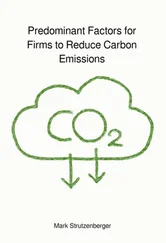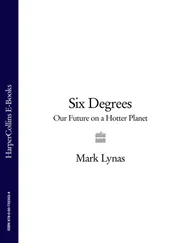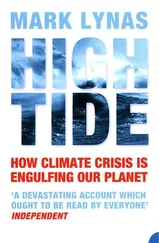WHAT IS A CARBON FOOTPRINT?
In short, a carbon footprint is a measure of an individual’s contribution to global warming. Almost every energy-consuming activity we engage in has a carbon cost. Sometimes this carbon expenditure is obvious, such as the exhaust belching out of the back of a ‘Chelsea tractor’ 4x4 on the morning school run. At other times it is less obvious, like the ‘food miles’ inherent in imported produce we might buy at a
supermarket. Your carbon footprint will be impossible to pin down exactly, but getting a general idea will help you to reduce your impact on the climate.
Many people (especially those who work in the fossil fuel industries) suggest that getting to grips with climate change will require terrible wartime-style sacrifices, where we all have to sit shivering around a single candle all winter while wearing five jumpers. But actually, reducing your carbon footprint is surprisingly easy, and not only does it not require hair-shirt sacrifices, it will probably increase your quality of life substantially. Cycling or walking rather than driving, eating local produce rather than supermarket junk and having some solar panels on your roof are hardly going to bring your world to an end. Sandals are, of course, optional.
Some comparisons between countries
We’ve all heard the cliché that Americans are greedy polluters, while Africans have a much lighter impact on the planet. But is it true? Different countries have radically different carbon impacts, depending on their pattern of development and the lifestyles of their citizens. America is in fact quite near the top of the global warming polluters’ league table, with almost 20 tonnes of carbon dioxide emitted per person. But the United Arab Emirates and Qatar, with their oil-rich economies, have twice the per-person impact of the US.
European countries tend to have about half the per capita emissions of the United States: the UK, for example, has 9.4 tonnes to America’s 19.8. So our carbon footprints are only half as large as those of the average American. But they are still big on a global scale – each Brit produces ten times as much CO 2as each Vietnamese. Global warming naysayers are fond of pointing the finger at China and India, as if they are to blame for the problem. But China’s emissions are only 3.2 tonnes per person while India’s are 1.2 tonnes per person.
Africa is often forgotten altogether, and African per capita emissions are indeed minuscule in comparison to ours. Tanzania’s people emit only 0.1 tonnes each – one hundredth of our per-person total – while Chad
Tip: At the moment it is not possible to say when each degree of temperature rise will be reached – because that depends on decisions we have all yet to make. If we continue to increase carbon emissions, we might reach two degrees as soon as 2030. But if we cut back our greenhouse gas emissions sharply, we may avoid two degrees altogether.
and Mali have emissions so low that they are not even measurable. It is interesting to note how African people are often blamed for environmental damage such as deforestation and the hunting of wildlife, but in global warming terms they are greener than green. The only exception is highly developed South Africa, which, with 7.8 tonnes per person, is nearly up to European standards. Anyone who has travelled around Johannesburg’s traffic-choked motorways will quickly understand why.
Of course, because developing countries have such huge populations, their global impact is considerable. China is the second-largest emitter in the world (after the United States, of course), with 14.5% of the world total. India is number four in the list, with 5.1% of the total, while the UK is seventh, with 2.3%. Because of their large total impact and the rapid scale of their economic development, it is clearly true that global
Tip: The UK often claims to be doing most towards bringing down greenhouse gas emissions, and the government projects that we are on target under the Kyoto Protocol to meet our reduction of 12.5% by 2012. However, a tougher government target of 20% reductions by that date has now been quietly dropped, and emissions are currently rising again – thanks mostly to the general public driving and consuming more.
warming cannot be solved without engaging developing nations in the effort. But while such dramatic per capita disparities remain, China and India have a fair point in refusing to take the first steps.
Contraction and convergence
Aubrey Meyer of the London-based Global Commons Institute has proposed an international solution – ‘Contraction and Convergence’ (C&C). This proposal recognizes that the only realistic way to avoid global political stalemate is to accept the need for equity – that each person has an equal right to the use of the atmosphere. At the moment, the wide divergence in carbon footprints means that each American is using nearly twenty times as much atmospheric space as each Indian. By demanding that India makes cuts at the same time as the US, the American government is in effect proposing to cement this inequity – something the Indian government is understandably unwilling to sign up to.
C&C gets around this problem by putting in place a framework for ‘convergence’ to equity where, by a negotiable date (say, 2030), each country in the world will have an equal emissions entitlement based on its population. While all of our carbon footprints might not be the same by that date, our rights would be.
So people in rich countries who want to use more than their fair share would have to pay for the right to do so by buying unused allocations from people in poorer countries. The result would likely be a net transfer of wealth from rich to poor, which would help tackle global poverty at the same time as global warming. This wouldn’t be charity, but trade – something world leaders are more likely to sign up to.
Of course, convergence is only one half of the equation. The other would be ‘contraction’, where global emissions contract downwards towards a sustainable level that would avoid serious climate change damages.
So far, C&C has gained substantial support from the African group of nations, while in the UK it has been recommended by the Royal Commission on Environmental Pollution and the Archbishop of Canterbury. Aubrey Meyer suggests that C&C could provide a stronger framework for climate change action once the Kyoto Protocol lapses in 2012.
Kyoto and international negotiations
In theory, the international community is already committed to solving climate change, and has been for more than a decade. The UN Framework Convention on Climate Change was signed in 1992 at the Rio Earth Summit by leaders from 150 nations, including the first President George Bush on behalf of the United States. In its Article Two, it said the following:
‘The ultimate objective of this Convention…is to achieve stabilization of greenhouse gas concentrations in the atmosphere at a level that would prevent dangerous anthropogenic interference with the climate system.’
Trouble was, no one defined ‘dangerous’. Moreover, the Convention was only voluntary, without specific measures to actually enforce its stated objective. Nothing much happened as a result, and greenhouse gas emissions continued to rise after the UNFCCC was signed. In order to address this, the Kyoto Protocol was negotiated in Japan in 1997 to try to give the Convention some teeth. Industrialized countries agreed that they should take the first steps towards cutting emissions, since they were the highest percapita polluters. Different nations took on different CO 2reduction targets: the United States agreed to a cut of 7%, while the EU got a cut of 8%. Japan and Canada each took on 6%, while Australia negotiated itself an increase in emissions by claiming special status as a smaller country. In total, emissions from the industrialized world under Kyoto were supposed to fall by 5% by 2012.
Читать дальше

![Carbon - Девушка с Косой [СИ]](/books/427728/carbon-devushka-s-kosoj-si-thumb.webp)










